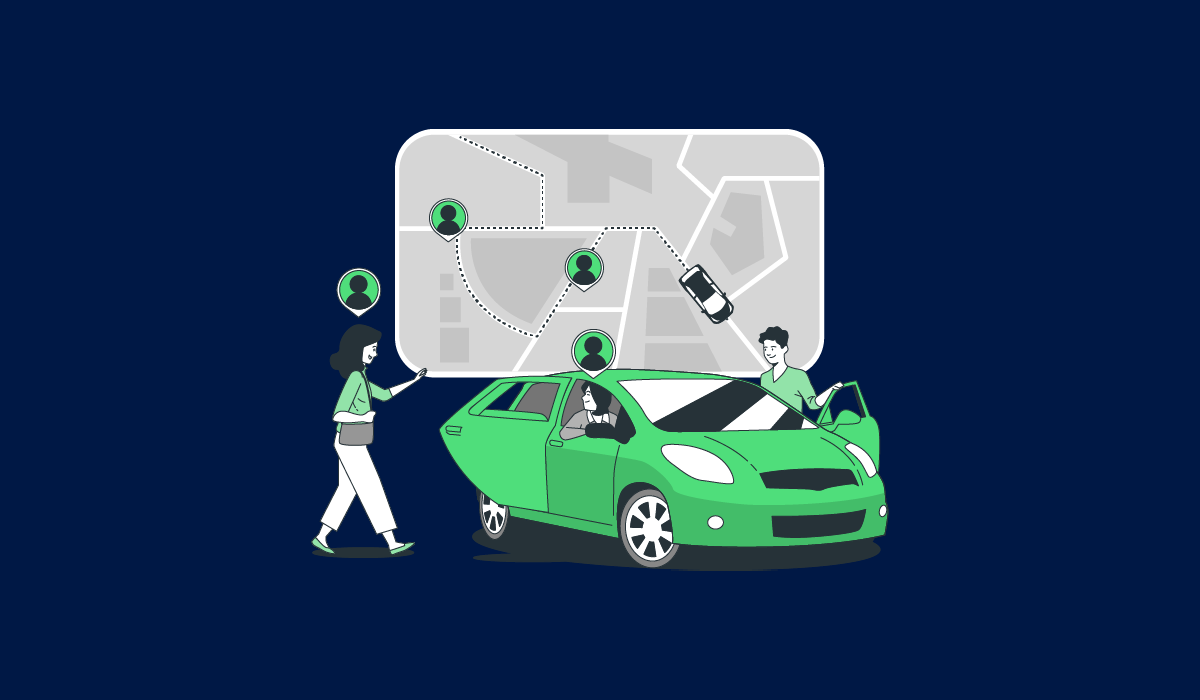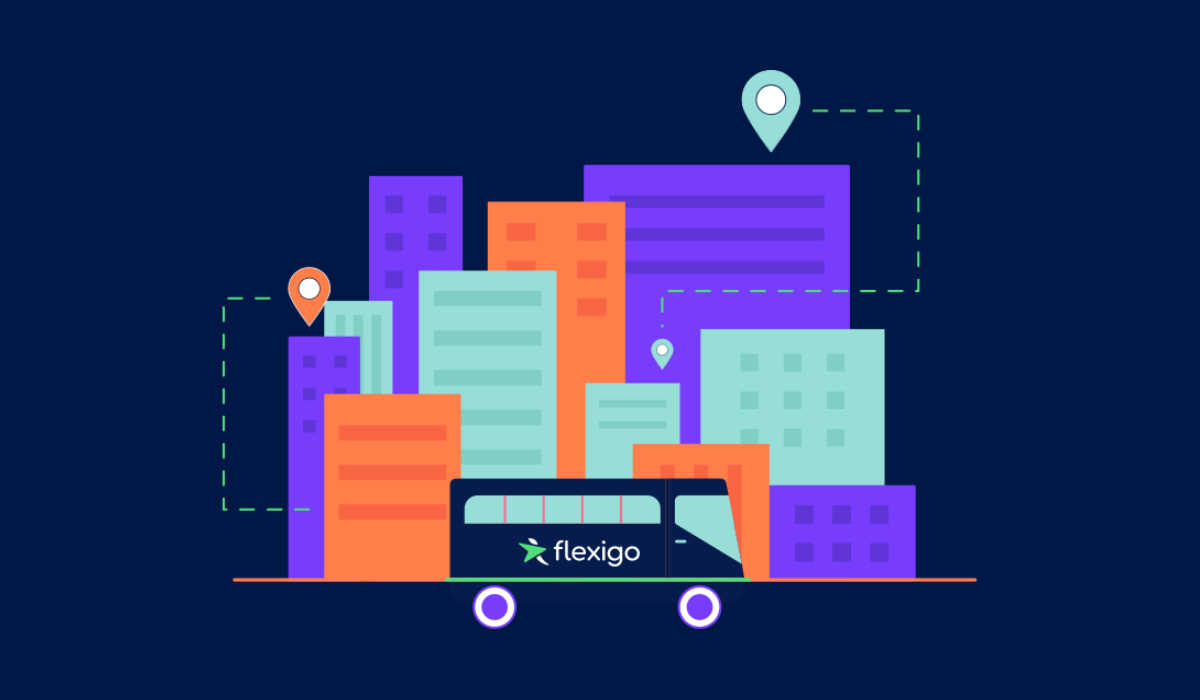We’ve all heard the term, but what does it mean and how do we use it to help our organizations and our employees? Transportation Demand Management – TDM – is a set of strategies and policies aimed at optimizing transportation options by reducing traffic congestion, improving air quality, and enhancing mobility for individuals. Companies often implement TDM initiatives as part of their ESG efforts and to improve the commuting experience for their employees.
Here's how TDM works and how companies use it:
- Commuter Programs: Companies can encourage employees to use alternative modes of transportation such as public transit, biking, walking, carpooling, telecommuting or hybrid and flexible work schedules.
- Flexible Work Hours: By implementing flexible work hours, companies can stagger employees' start and end times, reducing peak-hour congestion and spreading out demand on transportation infrastructure.
- Shuttle Services: Some companies provide shuttle services to transport employees between office locations, nearby transit hubs, or designated parking areas.
- Ridesharing and Carpooling Programs: Companies can facilitate ridesharing and carpooling among employees by providing online platforms or designated carpool parking spaces.
- Parking Management: Employers can implement parking management strategies such as charging for parking, implementing parking cash-out programs (where employees receive cash instead of parking subsidies), or offering preferential parking for carpoolers and low-emission vehicles.
- Bicycle Facilities: Providing amenities such as secure bike storage, showers, and changing rooms encourages employees to commute by bicycle, promoting physical activity and reducing reliance on motorized transportation.
- Partnerships with Local Authorities and Transit Agencies: Companies can collaborate with local authorities and transit agencies to advocate for improved public transportation services, infrastructure enhancements, and policies supportive of TDM objectives.
- Telecommuting: Allowing employees to work remotely, either part-time or full-time, can significantly reduce the number of trips made to the office, thereby decreasing traffic congestion and lowering emissions.
- Education and Outreach: Companies can educate employees about transportation options, promote TDM initiatives, and provide resources such as route planning tools, transit maps, and information on available incentives.
How Companies Leverage TDM Technologies
As employees within organizations of all types and sizes make their way back to the workplace in greater numbers, the commute has become more than just a means of getting to work; it's an opportunity for companies to enhance sustainability efforts, improve employee satisfaction, and even bolster financial success. Transportation Demand Management (TDM) technologies play a pivotal role in achieving these goals by optimizing commuting strategies and reducing environmental impacts. In this guide, we'll explore the various TDM technologies available and how they contribute to creating more sustainable and efficient commutes for organizations and their employees. I don’t want to give anything away, but there may even be some unexpected benefits of these programs for the organization and the communities in which they operate!
- Carpooling and Ridesharing Platforms: These platforms connect employees who share similar commutes, allowing them to share rides and reduce the number of vehicles on the road. By promoting carpooling, companies can alleviate traffic congestion and reduce carbon emissions.
- Public Transit Integration: Integrating public transit options into employees' commute plans encourages the use of eco-friendly modes of transportation. Companies can provide incentives such as subsidized transit passes or shuttle services to facilitate this integration.
- Bike Sharing and Cycling Infrastructure: Promoting cycling and other active transit modes as a commuting option not only reduces carbon emissions but also promotes employee health and well-being. TDM technologies can include bike-sharing programs and the development of cycling infrastructure like bike lanes and secure bike storage facilities.
- Dynamic Shuttle Solutions: As employees shift from fully remote to a more hybrid schedule, reintroducing fixed route shuttles may create instead of reducing waste in the system. Introducing dynamic shuttle lines, which are demand-responsive and offer door-to-door service, are a perfect fit for a hybrid or variable work schedule, allowing employees to find the ideal commute solution while still cutting down on transportation-related emissions and offering employees greater flexibility.
Linking Financial Success to Employee Engagement and ESG Goals
A company's financial success is intricately linked to its ability to engage employees and align with Environmental, Social, and Governance (ESG) goals. Research has consistently shown that engaged employees are more productive, innovative, and committed to their organization's success. Additionally, companies that prioritize sustainability and ESG initiatives tend to attract top talent, enhance brand reputation, and mitigate long-term risks.
Implementing a smart commute strategy with TDM technologies can lead to better Human Resources (HR), ESG, and financial outcomes for organizations. By offering employees sustainable commute options, companies demonstrate their commitment to environmental stewardship and employee well-being. This, in turn, boosts morale, productivity, and retention rates. Moreover, reducing transportation-related emissions aligns with ESG goals, attracting socially responsible investors and enhancing brand value.
Why flexigo is the Ideal Platform
In the realm of TDM technologies, flexigo stands out as the premier platform for businesses seeking to optimize their commute strategies. flexigo provides the most comprehensive and reliable set of TDM technologies on the market, seamlessly integrating carpooling, dynamic shuttle, vanpooling, and closed-loop car sharing and ride sharing, as well as public transit and active mobility solutions
flexigo's platform is not only advanced and reliable but also incredibly user-friendly for both employees and TDM administrators. Once implemented within an organization, flexigo enhances the variety of mobility services available to employees, improving the overall quality of commuting experiences. Moreover, flexigo's platform delivers tangible benefits such as cost savings, heightened employee engagement, enhanced safety, and reduced greenhouse gas emissions, aligning perfectly with organizations' HR, ESG, and financial objectives.
In conclusion, leveraging TDM technologies is essential for creating sustainable and efficient commutes that benefit both organizations and their employees. With flexigo's comprehensive and user-friendly platform, businesses can unlock the full potential of their TDM strategies, driving positive outcomes across HR, ESG, and financial metrics. Embracing sustainable commuting practices isn't just good for the environment—it's a strategic imperative for businesses looking to thrive in the modern marketplace.
By Dave Gallon - Managing Director US, flexigo

.png?width=200&name=logo%20(1).png)











